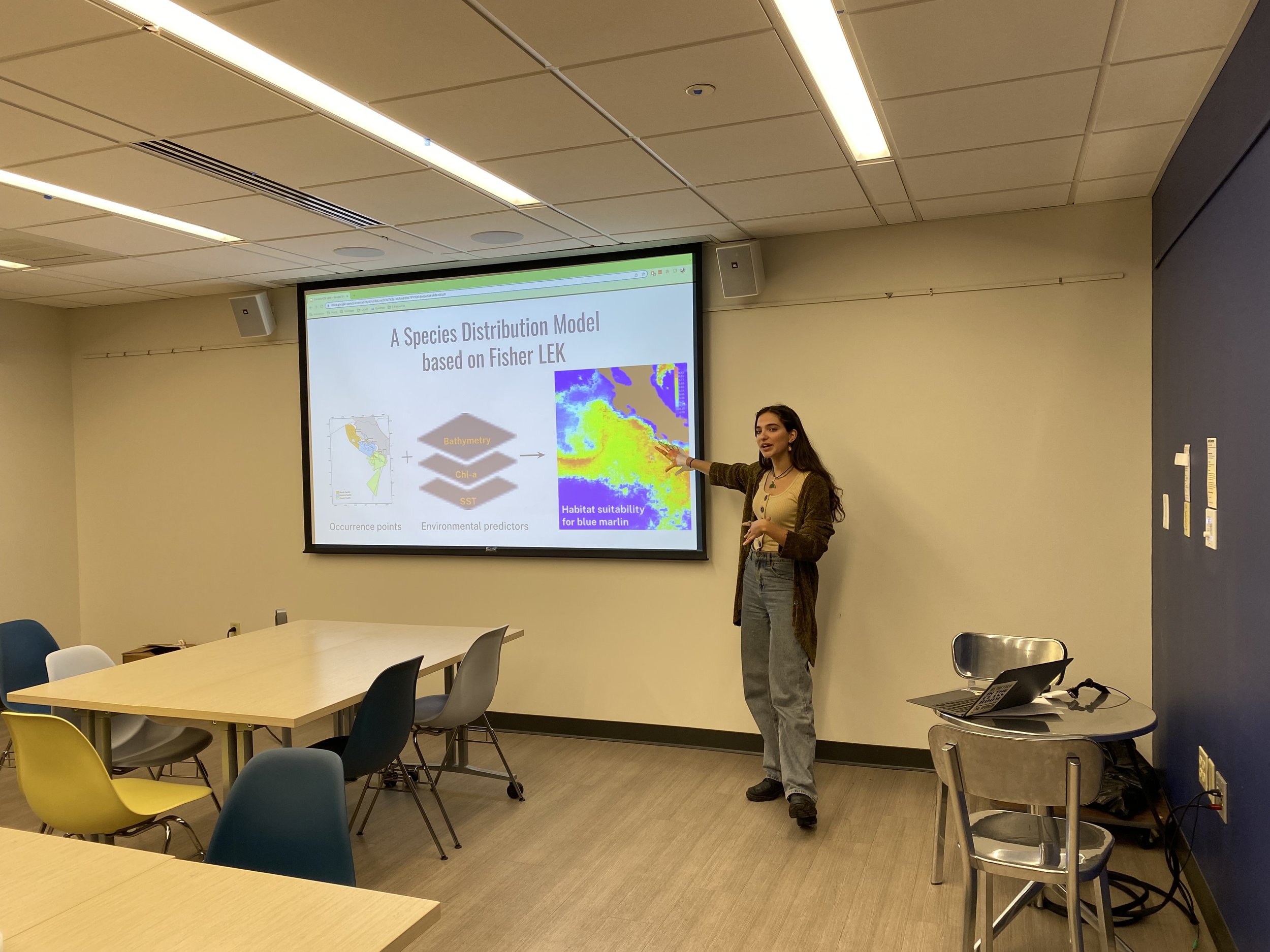Scientific data and lived experience are often portrayed as conflicting sources of information. But in last Friday’s knead 2 know, Global Food Fellow Daviana Berkowitz-Sklar '23 explained how these two ways of knowing complement each other in her analysis of Costa Rican billfish.
Costa Rica is home to various fishing interests, including sport fishing.. Sport fishing mainly targets billfish, a group of large fish with pointed bills that includes blue marlin and sailfish. Sport fishing generates hundreds of millions of ecotourism dollars each year, but many sport fishing captains have reported a perceived decline in the billfish population.
Stanford’s Project DynaMAR (Dynamic Marine Animal Research), the group with which Berkowitz-Sklar works, has used satellite tags to track billfish movement and create models of where billfish are located, but these tags are very expensive and not always accessible to other fishery research projects. Incorporating local ecological knowledge in these models may be helpful to fill gaps in scientific data and to include local communities in the scientific process. Local fishers add a valuable perspective, as they observe the state of the billfish fishery on a daily basis, including at times when scientists are not present.
To document fishers’ knowledge, Berkowitz-Sklar conducted semi-structured interviews with 54 sport fishing captains in six different fishing communities along Costa Rica’s Pacific coast. She asked interviewees about the availability of billfish, how far offshore captains traveled to fish, whether this distance had changed over time, and what threats the billfish population faced. She also engaged fishers in a participatory mapping process, giving interviewees a map of the region and asking them to circle the best areas to find sailfish and blue marlin.
Berkowitz-Sklar is generating habitat suitability models by combining the participatory map data with other environmental predictors that fishers had indicated were important, like bathymetry (the topography of the ocean floor), chlorophyll-a levels, and sea surface temperature. These kinds of models can be used to predict not only where billfish currently reside, but also where their populations might move and what regions are most in need of conservation as ocean conditions change. She will look at fisher-mapped billfish distributions and DynaMAR’s satellite tag data side-by-side to explore how ecological knowledge and scientific methodologies can work together.
In addition to gathering information from local fishers, Berkowitz-Sklar wants to ensure that her research is useful for her interviewees. To that end, she is writing a report and creating infographics to share with local fishers, and she presented her findings to Costa Rica’s Ministry of Fishing. In the future, Berkowitz-Sklar also plans to conduct similar interviews with other fishers in other fishing industries to include a wide range of perspectives.
We thank Berkowitz-Sklar for her insightful knead 2 know and hope her work inspires future Global Food Fellows. We also thank all those who joined us for warm soup, crusty bread, and fresh chili oil (homemade by Caitlin Chung ’25). This Friday, former Yale Farm Summer Intern Eli White ’25 will deliver our last indoor knead 2 know of the semester, as they present their work on the aesthetics of food and agriculture — and give attendees a chance to make their own watercolor paintings. We’ll be back on the Farm after spring break.


